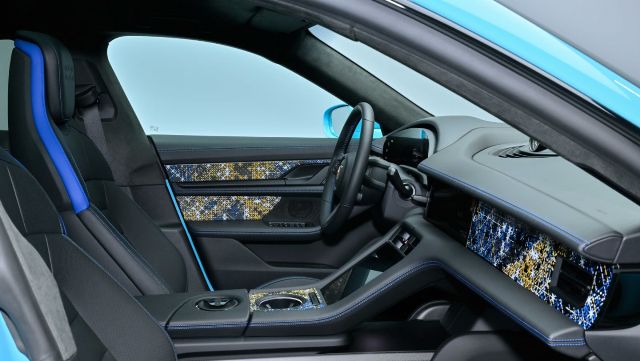Engineering fit-for-purpose solutions for complex liquid management projects is no easy feat. It requires a unique level of expertise and a carefully curated approach to ensure all technical aspects are met.
Projects of this nature also pose significant design challenges and carry inherent safety risks, particularly in remote mine sites where the type of solution being developed has never been done before.
Coerco has utilised a project delivery pathway that has become the cornerstone in how the liquid control specialists manage and deliver client projects at scale. It is also a proven method to de-risk a project and achieve successful outcomes, no matter its size or location.
The discover, develop, deliver framework aims to identify and solve the challenges clients face – from time pressures, conceptual design, and costs, to unknown risks, resource utilisation, and regulatory compliance.
According to Coerco division manager Gareth Wallis, the company’s structured pathway supports significant project scopes and addresses design issues with liquid management equipment that are often left unattended until time critical junctures.
“We essentially developed this process to help our clients navigate their pain points throughout the project delivery lifecycle. We take a holistic view of a project, break it down into pieces, and tailor an approach that will deliver the best outcomes possible,” Wallis said.
“Our structured pathway supports significant project scopes and addresses design issues with liquid management equipment that are often left unattended until time critical junctures. We essentially developed this process to nurture our clients through the pain points they experience during project delivery.”
One recent project that has exemplified Coerco’s tried and tested methodology is the Kidston project in far north Queensland – the largest hydro pumped storage project of its kind in Australia for over 40 years.
Coerco were engaged by McConnell Dowell to design a solution that would not only pump 30 gigalitres of water out of an abandoned gold mine, but would manoeuvre with fluctuating water levels at a vertical depth of 180 metres.
Compared to traditional hydro power stations, the uniqueness of this project presented a series of technical challenges.
“The discover phase required us to first understand the magnitude of the project at hand, which was how to best service and dewater the Eldridge pit,” Coerco head of projects Warren Classen said.
“We needed to employ different service methods due to the accessibility issues experienced onsite. Rather than workers scaling down the pit embankment, we lowered them via helicopter, which proved a far safer option.”
Classen highlighted the importance of Coerco’s discover phase and the key considerations as part of the project.
“It was a truly collaborative effort between multiple parties in the tendering process, from head contractor to pump manufacturers and engineering consultants,” he said.
“An in-depth design process was conducted over a 12-month period, which reviewed all aspects of the dewatering pontoon system. From the types of pumps and motors, installation and assembly onsite, transportability, the launch method and manoeuvrability in the dam, to the pontoon’s modularisation and ability to disassemble it once it had reached the bottom of the pit before extraction via the existing tunnelling system.”
The selected conceptual design complemented the pump system perfectly, ensuring the most efficient solution.
Once the water level dropped, there was no way of accessing the pit. This meant whatever system that was developed had to be reliable, with appropriate tethering that allowed the pipework to not only follow the path of the pontoon, but also the natural terrain inside the pit.
The design phase proved critical in ironing out any technical issues associated with the tethering and winching systems, as well as discharge spooling and structure that supported the pumps.
Classen said that the team had to engineer a stable, self-floating structure capable of supporting the massive pumps, and also to mitigate any future risks, particularly at the deliver stage.
“Considering there are six 10-tonne pump and motor units, a total of 60-tonnes needed to be assembled and floated on the ponton deck,” he said.
“Each module stage pump features an 850 kilowatts (kW) motor with a flow rate of 280 litres (L) per second per pump. This enabled the system to pump 1200L of water per second out of the pit before shutting it down and disassembling it reached the bottom of the pit.”
Coerco worked closely with the client, reviewing every aspect of the system to ensure it could be safely assembled and launched onsite.
A comprehensive approval process was conducted including the review of drawings, the engineered winch system and winch slabs, the installation methodology, sequencing of the assembly and craneage into the water, as well as the installation of the manifolds, pumps, and attachment of motors.
All of this was essential to ensure appropriate buoyancy was maintained as the water level fluctuated.
“Discussions around manual handling, lifting and unloading the system took place prior to fabrication,” Classen said.
“We provided the client with updates at every step of the fabrication process, with detail covering the lifting lugs and cranage points for example. Once the system had been fabricated, the necessary approvals were granted, one of which was RPEQ certification, specific to Queensland.”
This project has fully showcased Coerco’s project delivery pathway that was designed to deliver successful liquid management solutions for projects of any size or complexity.
Download the Kidston hydro pumped storage project case study here.
For more information, visit the Coerco website.



